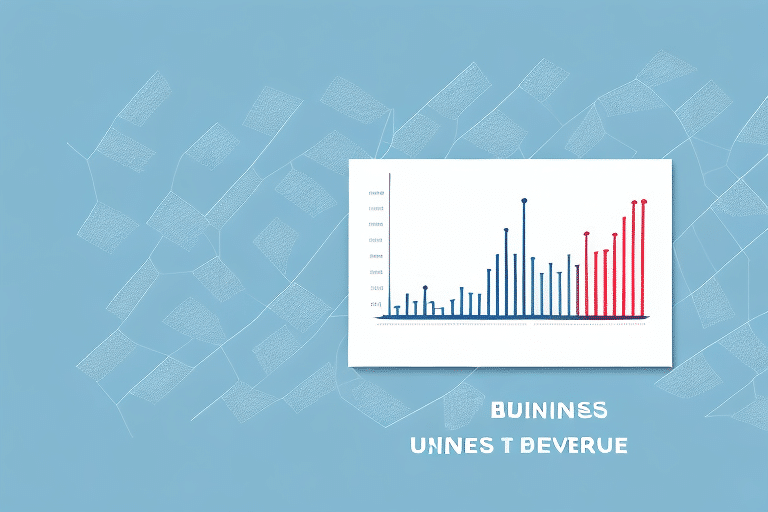Understanding Average Revenue Per Unit (ARPU)
As a business owner or manager, measuring success is crucial for making informed decisions that keep your operations profitable. One important metric to consider is Average Revenue Per Unit (ARPU). ARPU represents the average revenue your business generates per unit sold or per customer served. Understanding and tracking your ARPU provides valuable insights into your business, aiding decisions related to pricing, marketing, and product development.
What is ARPU?
ARPU is a key performance indicator (KPI) that reflects the health and efficiency of your business. It helps in determining the profitability of different products, services, or customer segments, allowing you to identify which areas are performing well and which need improvement.
How to Calculate ARPU
Calculating ARPU is straightforward. You need two pieces of information: your total revenue and the number of units sold or customers served.
ARPU = Total Revenue / Number of Units Sold or Customers Served
For example, if your business generated $50,000 in revenue and served 500 customers, your ARPU would be $100.
ARPU vs. Average Order Value (AOV)
It's important to note that ARPU is not the same as Average Order Value (AOV). While AOV measures the revenue generated from a single transaction, ARPU looks at the overall revenue generated by a customer or unit over a period of time.
The Importance of Tracking ARPU
Tracking ARPU over time can provide valuable insights into your business performance. By analyzing ARPU trends, you can identify changes in customer behavior, market conditions, or pricing strategies that may be impacting your revenue.
Setting Revenue Targets
Understanding your ARPU helps in setting realistic revenue targets. For instance, a lower than expected ARPU might indicate the need to raise prices or introduce higher-priced products, whereas a high ARPU could allow for customer acquisition through discounts or promotions.
Informed Decision-Making
ARPU helps in making informed decisions about where to allocate resources, which products to develop, and how to tailor marketing strategies to maximize revenue.
Factors Influencing ARPU
Several factors can impact your ARPU:
- Pricing: The price of your products or services significantly affects ARPU. Higher-priced offerings generally lead to a higher ARPU, but it's essential to balance price with demand.
- Product Mix: Offering a range of products at different price points can influence ARPU. A sales mix skewed towards higher-priced items will increase ARPU.
- Customer Segments: Different customer segments have varying spending behaviors. Serving high-end customers willing to pay more can boost ARPU.
- Marketing: Effective marketing can attract higher-value customers and promote premium products, thereby increasing ARPU.
- Competition: In highly competitive markets, businesses might lower prices to stay competitive, potentially reducing ARPU. Conversely, niche markets with less competition might allow for higher pricing.
- Customer Loyalty: A loyal customer base is more likely to make repeat purchases and be open to premium offerings, enhancing ARPU.
Strategies to Increase ARPU
If your ARPU is lower than desired, consider implementing the following strategies:
- Introduce Higher-Priced Products: Offering premium products or services can elevate your ARPU. Conduct market research to identify unmet demands or niche opportunities.
- Cross-Sell and Upsell: Promote related or higher-value products to existing customers to increase the value of each sale.
- Segment Your Customers: Identify and target high-value customer segments with tailored marketing and sales efforts to attract customers willing to pay more.
- Implement Dynamic Pricing: Utilize data and analytics to adjust prices based on demand and other factors, optimizing your pricing strategy to boost ARPU.
Common Mistakes When Calculating and Analyzing ARPU
When calculating and analyzing ARPU, avoid the following common mistakes:
- Misreporting Revenue: Ensure all revenue sources are included, such as discounts, refunds, and one-time or recurring fees.
- Using Incorrect Units: Use the appropriate unit of measurement, like the number of subscribers for a subscription service instead of the number of sales.
- Not Accounting for Seasonality: ARPU can fluctuate seasonally. Consider these variations when analyzing trends.
- Ignoring External Factors: Economic changes, shifts in consumer behavior, or regulatory changes can impact ARPU. Factor these into your analysis.
Real-Life Examples of Companies Increasing ARPU
Several companies have successfully increased their ARPU through innovative strategies:
- Amazon: By introducing premium features like Amazon Prime and Amazon Web Services, Amazon significantly boosted its ARPU.
- Spotify: Offering family plans and partnerships with telecommunications companies helped Spotify increase both its user base and ARPU.
- Apple: Launching higher-priced products such as the iPhone X and developing a robust ecosystem of services and accessories enabled Apple to elevate its ARPU.
Best Practices for Maintaining a Healthy ARPU
To maintain and improve your ARPU, consider the following best practices:
- Regularly Monitor and Analyze ARPU: Continuously track ARPU and analyze trends to identify areas for improvement and make informed decisions regarding pricing and product development.
- Segment Your Customers: Focus on high-value customer segments by tailoring marketing and sales efforts to attract those willing to pay more for premium offerings.
- Review Your Pricing Strategy: Regularly assess and adjust your pricing strategy based on customer behavior and market conditions to optimize ARPU.
- Encourage Cross-Selling and Upselling: Promote related or higher-value products to increase the average value of each sale.
- Stay Ahead of Industry Trends: Keep up-to-date with industry trends and adopt new technologies and business models to remain competitive and sustain a healthy ARPU.
Relationship Between Customer Lifetime Value (CLV) and ARPU
Customer Lifetime Value (CLV) represents the total value a customer brings to your business over their lifetime, while ARPU reflects the average value per customer. Increasing ARPU can directly enhance CLV by retaining more customers and increasing the frequency and value of their purchases.
Comparing ARPU to Industry Benchmarks
Comparing your ARPU to industry benchmarks provides insights into your business performance relative to competitors. It's important to consider your business's unique characteristics and industry specifics when making these comparisons. For example, operating in a specialized niche might result in a higher or lower ARPU compared to the industry average.
Using ARPU to Make Informed Business Decisions
Your ARPU serves as a valuable tool for various business decisions:
- Pricing: Assess the effectiveness of your pricing strategy and determine if adjustments are necessary.
- Product Development: Identify which products or services drive your ARPU and prioritize their development.
- Marketing: Determine which marketing channels and tactics are most effective in attracting higher-value customers.
- Performance Measurement: Monitor ARPU over time to evaluate business performance and identify areas needing improvement.
By understanding and tracking your ARPU, you can make informed decisions that keep your business profitable and competitive. Regularly calculate your ARPU, analyze trends, identify areas for improvement, and implement strategies to increase your revenue per unit.




















